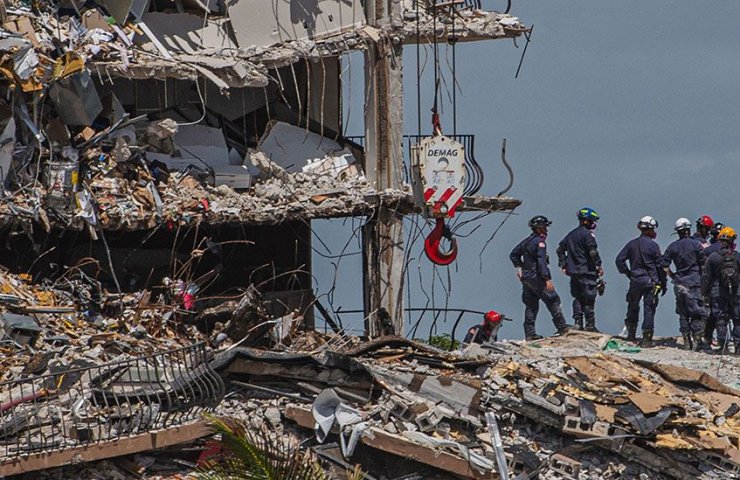An insufficient amount of reinforcement in the building's foundations could have caused a catastrophic collapse of an apartment building in Miami, engineering experts interviewed by Independed said after examining photographs of the site and the destroyed complex.
The Champlain Towers South, a 12-story, 136-unit, reinforced concrete building was completed in 1981.
According to the original building design plan from 1979, a large amount of steel reinforcement was required to connect the concrete slabs under the multi-storey car park with vertical columns supporting the rest of the building at the top. However, photographs of the first collapse site show much less reinforcement than originally anticipated.
"The fittings may not be positioned exactly as the original blueprints require," forensic expert Allin Kilshemir told the newspaper.
However, he warned that any findings are still at a very early stage, and much more investigation is required before determining the cause of the building collapse, which killed at least 24 people and still 124 people. are reported missing.
“We have a number of issues that we think could be part of or a trigger for what happened,” he said.
Experts who have studied the recording suggest that the collapse process began in the basement of the building, above which there was a swimming pool located in front of the central section.
An insufficient amount of reinforcement could be the very "trigger", since over time, in conditions of high humidity, reinforcement embedded in concrete, rusting, significantly increases in diameter.
“The concrete around it begins to crack, which decreases its strength. And as soon as one column or overlap fails, everything develops according to the domino principle, ”the expert explained.
Search and rescue operations at the site of the collapse may soon end. Local authorities are reportedly working on plans to demolish the rest of the building as early as Sunday.
Building codes have been in place in Florida and beyond since the 1980s when the Champlain Towers were built, but local authorities have called for new measures to prevent future disasters.





